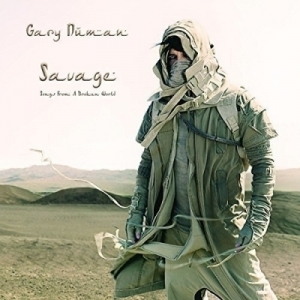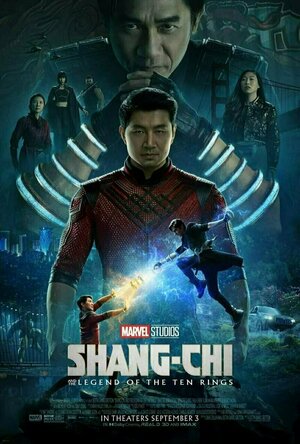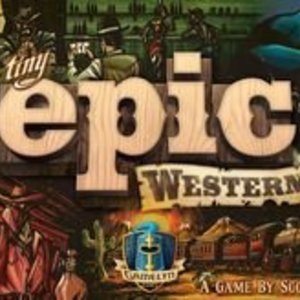
India Panchang Calendar 2017
Lifestyle and Utilities
App
The Panchang is ancient spiritual and scientific calendar system based on the positions of the...

Savage (Songs From A Broken World) by Gary Numan
Album Watch
Coming almost four years after his album ‘Splinter (Songs From A Broken Mind)’ earned the best...
dance pop

Bluee Free International Calls
Social Networking and Productivity
App
Bluee - International Calls and SMS App • Earn UNLIMITED FREE CREDITS and CALL FOR FREE (no...

UK Newspapers | Wales Newspapers| Scotland Newspapers |Northern Ireland Newspapers
News and Business
App
Finally, you will put your finger on the pulse of what’s happening in the UK and abroad, the same...

Pegipegi Hotel Kereta Pesawat
Travel and Utilities
App
Enjoy an easy access for Hotel Booking, Flight Tickets, and Train Tickets in the palm of your hand!...

Tiket.com - Pesan Tiket Online
Travel and Lifestyle
App
Tiket.com is the first and the most complete online travel agent in Indonesia that meets your...

Indian Railway IRCTC Train PNR & Running Status
Travel and Utilities
App
“Hotfoot” is a best rated travel app that gets train running status, PNR status, Live train...
Gareth von Kallenbach (980 KP) rated Shang-Chi and the Legend of the Ten Rings (2021) in Movies
Aug 23, 2021
The film introduces audiences to Shang Chi (Simu Liu); an easygoing San Francisco resident who spends his time parking cars and hanging out with his friend Katy (Awkwafina) and her family.
Life is steady if unspectacular until he is accosted on a city bus by a group looking to take a pendant his mother gave him. When Shang Chi shocks Katy and the occupants of the bus with his martial arts abilities; he attempts to find his sister Xialing (Meng’er Zhang); who runs an underground fight club. While Xialing is estranged from her brother; their father Wenwu (Tony Chiu-Wai Leung) has conspired to bring them and their pendants before him.
Their father uses the power of sacred devices known as the Ten Rings to rule for over a thousand years and destroys all who would oppose him thanks to their power and the army he has gathered over the centuries.
Wenwu wants to revive their long-dead mother as he is convinced that she is calling to him and he wants to be with her as he was able to be a better man and forsake the power and abilities the rings offered him.
When it is learned that Wenwu plans to go to a mythical realm that their mother came from and free her or burn the place to the ground; Shang Chi must make some hard choices between family and doing what he believes is right.
What follows is an action-filled thriller with plenty of mysticism and humor. The film has a very engaging visual style that combines Asian and Western cinematic styles which results in some very engaging visuals as well as action sequences.
What really sets the film apart from many Super Hero films is that the characters have a solid base to them as they have a complexity to them in regards to their past and their motivations. Their relationships with one another are key to the film as family, honor, and justice are key elements to the film but they are not given lip service but are developed well along with their characters.
While the final act may be a bit FX heavy for some; I found it in keeping with the story and the characters and the great Sir Ben Kingsley provides some very welcome comic relief in his return as Trevor.
Awkwafina is also great as she provides some very laugh-out-loud moments but is not afraid to mix it up when the situation calls for him. Simu Liu was very enjoyable in the lead role as he performed the physical aspects of his character well but added a restrained sensitivity to his character as he is a complicated individual who is conflicted by choices he made in his youth and the ramifications of them now as an adult.
There are bonus scenes that set up future adventures well including one that will no doubt have Marvel fans heatedly debating when the film premieres.
Once again Marvel has shown why they have had such a sustained success with their films as they have done a great job again of introducing a new character to the Cinematic Universe but also connecting him to their cinematic past and future.
4 stars out of 5
Bob Mann (459 KP) rated The Meg (2018) in Movies
Sep 28, 2021
Jason Statham – the unthinking man’s Dwayne Johnson – plays our hero Jonas Taylor. (Jonas? Surely some sly joke?). Jonas is drinking his life away in Thailand after being traumatised by an underwater rescue mission in which he was 90% successful. (Yeah, I know. Bloody perfectionists. Hate ’em). But he is needed again, since his cute ex-wife Lori (Jessica McNamee) is stuck at the bottom of the sea being terrorised by a terrifying creature: no, not Spongebob Square Pants… the titular prehistoric shark.
Lori is working at an undersea research station – Mana One – off the coast of China, funded by the annoyingly brash billionaire Morris (Rainn Wilson, from “The Office”), who you just HOPE HOPE HOPE will get munched at some point!
Running the station (in the most shameless Hollywood/Chinese market crossover since “The Great Wall“) is Zhang (Winston Chao) assisted by his cute daughter Suyin (played by the gloriously named and very talented Bingbing Li) and his even cuter granddaughter Meiying (Sophia Cai). The race is on to use their brains and Taylor’s brawn to stop the monster from reaching the seaside resort of Sanya Bay for lunch.
The action is, of course, absurd with so many near misses for Jonas from gnashing teeth that he could be The Meg’s registered dentist. There is a really nice dynamic though built up between Jonas, his potential cross-cultural love interest Suyin and young Meiying. Suyin is a classic TimesUp heroine for 2018, with an assertive f***-you attitude and not remotely giving an inch to Statham’s hero.
But it’s young Sophia as Meying who really steals lines and steals hearts with a truly charming performance, and would get my ‘man of the match’ were it not for…
…research assistant Jaxx (Australian model, Ruby Rose). She has an absolutely extraordinary look in this film. Chiselled and tattooed, she literally looks like she has stepped out of a Final Fantasy video game… and acts well too: the complete package.
As referenced above, the Hollywood/Chinese crossover is quite striking in this film, with the Chinese beach location looking like Amity Island on crack! (Cue the overweight Chinese kid as the Jaws “Alex” replacement… who knew China had a child obesity issue too… and that they also have ‘Zoom’ ice lollies!) Unusually for a mainstream Western film, a significant number of lines in the film are in Chinese with English subtitles.
In the league table of shark movies, it is far nearer to “Deep Blue Sea” than it is to “Jaws”, the reigning league champion, and all are far in excess of the ridiculous “Sharknado”. But compared to “Deep Blue Sea”, and even compared to “Jaws” – now, astonishingly, 43 years old! – it’s a curiously bloodless concoction, presumably to guarantee it’s 12A certificate. I have seen far bloodier and more violent 12A’s, and if anything I think director Jon Turteltaub (“National Treasure”) rather overdid the sanitisation.
It’s not going to win many gongs at the Oscars, but it is a slice of movie fun nonetheless.
Purple Phoenix Games (2266 KP) rated Tiny Epic Western in Tabletop Games
Dec 30, 2021
Disclaimer: I do not intend to rehash the entire rulebook in this review, as there are just too many details, but will instead provide a more general overview of the rules and gameplay. -L
Tiny Epic Western is a game of worker placement and set collection in which players are trying to amass the most end-game victory points. Played over a series of rounds, players will be placing their Posse (Meeples), collecting Influence and taking actions, dueling opponents (if necessary), playing a bit of poker, and buying buildings in an effort to become the most powerful boss in this wild west town. To setup for a game, place the Location Mats as described in the rules, dealing a Building Card where appropriate. Each player receives a Boss card, 3 Posse tokens (Meeples), and one of each of the Influence trackers (Money, Law, and Force), placed on the 1 space of their card. Shuffle the decks of Building Cards and Poker Cards separately, choose a starting player (who receives the Dealer token), place the Wanted card/Gunslinger dice in the center of the play area, and the game is ready to begin! Pictured below is the starting setup for a 3-player game.
The game is played over 6 total rounds, each of which is broken into 4 phases: Shuffle and Deal, Posse Placement, Resolution, and Buy. To start a round, the Dealer shuffles the deck of Poker cards, and then deals 1 card face-up to the 6 empty spaces between the Location Mats. One Poker card is dealt face-down to the Rival Space (under the Town Hall Location Mat), and 2 Poker cards are dealt face-down to each player. Players look at both of their cards and pick 1 to keep, discarding the other. The round then moves to phase 2: Posse Placement. Starting with the Dealer, players will take turns placing Posse tokens onto the placement spots on any of the Location mats. All placement spots grant unique benefits (collecting different Influence or performing Building card actions) that are performed either immediately or during later phases of the round. What happens if an opponent took a placement spot that you wanted? Then it’s time for an old-fashioned duel! The dueling players each roll a Gunslinger die, modify it if they so choose, and determine a winner. Players continue taking turns placing Posse tokens until all available Posse tokens have been placed.
When all Posse tokens have been placed, the round moves to phase 3: Resolution. The first step of this phase is to reveal Poker cards – all players reveal their cards, and the card in the Rival Space is also revealed. Moving clockwise from the Town Hall, each Location will be resolved by ‘playing’ three-card poker. Each Location has 2 Poker cards directly adjacent to it (placed between the Locations in phase 1), and those 2 cards plus the one in your hand will form your Poker hand. Any players with Posse tokens on the Location will compare their Poker hands to determine a winner. If you win the hand, you collect the Winner’s Pot (extra benefits) and are able to collect any delayed benefits from placement spots in the Posse Placement phase. Losing the hand earns you nothing *womp womp*. If you are the only Posse on a Location (with no opponents) you will compare your hand to that of the Rival. The Rival’s hand uses the cards adjacent to the Town Hall, plus the revealed card in the Rival Space. If you have a better hand, you win the benefits on your Location. If the Rival wins, though, you do not collect these benefits. All Locations are resolved in this fashion before the last phase of the round, Buy, begins.
To start this phase, all players will compare their three-card Poker hands using the 2 Poker cards adjacent to the Town Hall. The player with the best hand will act first in this phase, followed by the next best hand, and so on. The first player may now choose to buy a Building card from any Location on which they have a Posse token. Pay the requisite amount of Influence to purchase a Building, and add it to the Porch Slot on your color-corresponding Location Mat. The power granted by this Building card is now available for use in future rounds. Once all players have had the option to purchase a Building, the player with the best hand will advance one of the Industry Tokens at Town Hall. The placements of Industry Tokens will affect end-game scoring, so keep that in mind as the game progresses. When all steps of the Buy phase are performed, the round now ends. Players collect all their Posse tokens back to their boss cards, all Poker cards are collected and re-shuffled, new Building cards are dealt to Locations from which they were purchased this round, and the Dealer token is passed to the next clockwise player. If a player did not buy a Building at all during the round, they have gained the Third Posse Benefit for the coming round – granting them an additional Posse token to place during phase 2. Otherwise, all players will only ever have 2 Posse tokens to place.
After a total of 6 complete rounds, the game ends and points are tallied. Victory Points are earned from Building cards bought throughout the game. Building cards have a specified VP amount, and also have a collection of Industry Icons on them. Using the final placement of the Industry Tokens on the board, players will earn points for Industry Icon sets they have collected. And finally, whomever holds the Wanted card (won the last duel) gains an additional 2 VP. Points are all counted, and the player with the highest score is the winner.
That all probably sounds pretty complicated. But I do have to say that verbally explaining/teaching the game (and being able to use components for examples) is waaaaay easier than doing so through a text review. So please do not let the seemingly complex gameplay turn you off from this game. Once you get a basic understanding of the phases of each round, the game moves along pretty seamlessly. Honestly, the biggest learning curve for me to conquer was playing three-card poker. As someone who has never played any form of poker before, this was probably what had me most hesitant about learning TEW. After having played it now, three-card poker really isn’t too complicated, and there are some nice player reference cards to help you figure it out.
Aside from the poker element, this game really comes down to worker placement and strategy. Each Location card only has a finite number of placement spots, and the resources required to buy Buildings are not exactly in abundance. This affects your strategy, as you must decide which resources to collect at what times, as well as deciding whether you need to duel someone for a coveted resource. Another element to your strategy? You may only buy Building cards from Locations on which you have a Posse token. Maybe none of those placement spots really appeal to you this round, but you reaaaaally want that specific Building card. Are you willing to ‘burn’ a Posse token for the chance to buy it? Or is there a different Location that offers a useful resources and a desirable Building card? Also, keep in mind how your poker hand will come into play. Since poker cards are dealt to each Location at the start of a round, you are able to see what your hand will be for each Location. Maybe you have a pretty strong hand at the Bank Location, but at the Courthouse the cards end up being a bust. Are you willing to risk a placement in hopes that you have the best hand of the bunch? Because remember – if you don’t have the best hand at a Location, you get no resources/rewards! There are so many elements to a successful strategy with this game, and it really keeps all players engaged at all times. Be warned though – the variety of strategic options could be difficult for some AP-prone players.
Let me touch on components for a minute. As with all Tiny Epic games, the production quality of TEW is pretty stellar. The cards are nice and sturdy, and the iconography is clear. The Posse tokens are cute Meeples with cowboy hats, and they are nice and chunky. The only thing I don’t really like about this game are the Gunslinger dice. In theory, they are super cool, but in actual execution, they leave much to be desired. The numbers aren’t really clearly define, so they’re a bit tricky to read. Aside from that, a pretty high quality game here.
So all in all, how does Tiny Epic Western stand up in the series? It is definitely one of the heavier games of the bunch, and there is so much more going on than initially meets the eye. It feels daunting for the first few plays, but once you get the phases under your belt, it really flows pretty well. I can’t say that it is my favorite Tiny Epic game, as I just personally feel like there are too many elements going on at the same time. You’re strategizing your worker placement, but also need to consider buying Buildings for VP and to collect sets of Industry Icons and for their specific abilities, as well as figuring out your poker hand for 5 different Locations, and dealing with duels. Some people might really be into that amount of strategic forethought, but it feels a bit cumbersome to me. That being said, Purple Phoenix Games gives this three-card poker game a 3/6. The gameplay is decent, just not really my kind of game.


